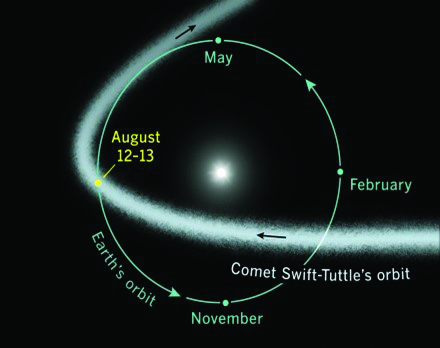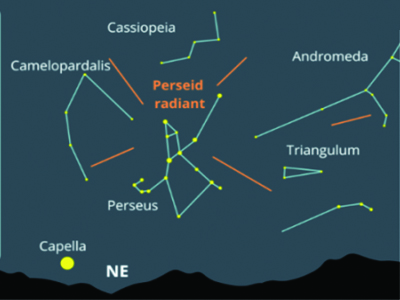While on a summer camping trip with his family in the mountains near Aspen, Colorado, singer John Denver witnessed an event so awe inspiring that he felt compelled to include it in a song he was working on. The song would go on to become his 1972 hit “Rocky Mountain High”. What John and his family experienced that night was the Perseid meteor shower and the song’s chorus captures the imagery perfectly: “I’ve seen it raining fire in the sky.”
First off, what is the Perseid meteor shower?
You can thank a comet for this annual spectacle. Comet Swift-Tuttle is the largest object known to repeatedly pass by Earth; its nucleus is about 26 kilometers wide. It was first discovered in 1862. It returned in 1992 and will again in 2126.
Comets are crumbling cosmic snowballs of frozen gases, rock, and dust, and as they revolve around the sun, they leave behind a trail of debris. Every year like clockwork, from July 17 to August 24, Earth plows through this cloud of particles as it intersects Swift-Tuttle’s orbit.
Tiny bits of castoff comet heat up as they enter the atmosphere and burn up in a bright flash of light. It is called the Perseid meteor shower because it seems to originate from the constellation Perseus.
Each night, the number of meteors increases until they peak on the night of August 12 and before dawn on the 13th. Most years, 60 to 100 meteors an hour are visible. You don’t need a telescope or binoculars, just a clear sky to the northeast, a reclining chair, a blanket, and some patience.










